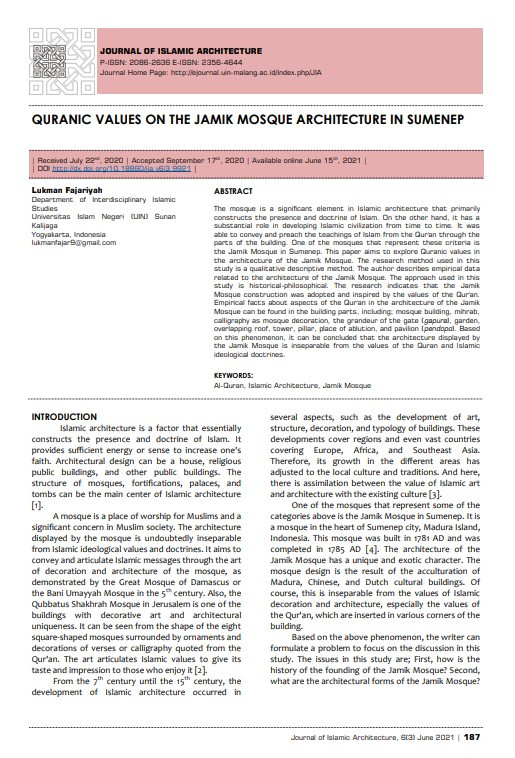
The mosque is a significant element in Islamic architecture that primarily constructs the presence and doctrine of Islam. On the other hand, it has a substantial role in developing Islamic civilization from time to time. It was able to convey and preach the teachings of Islam from the Qur’an through the parts of the building. One of the mosques that represent these criteria is the Sumenep Jamik Mosque. This paper aims to explore Quranic values in the architecture of the Jamik Mosque. The research method used in this study is a qualitative descriptive method. The author describes empirical data related to the architecture of the Jamik Mosque. The approach used in this study is historical-philosophical. The research indicates that the Jamik Mosque construction was adopted and inspired by the values of the Qur’an. Empirical facts about aspects of the Qur’an in the architecture of the Jamik Mosque can be found in the building parts, including; mosque building, mihrab, calligraphy as mosque decoration, the grandeur of the gate (gapura), garden, overlapping roof, tower, pillar, place of ablution, and pavilion (pendopo). Based on this phenomenon, it can be concluded that the architecture displayed by the Jamik Mosque is inseparable from the values of the Quran and Islamic ideological doctrines.
I agree to the terms outlined below:
You agree to upload and assign Mosqpedia Database the rights to use the content worldwide and in perpetuity across all current and future media platforms. Mosqpedia Database may edit, copy, adapt and translate your contribution.
The content will be distributed under the Creative Commons Attribution-Deed – Attribution-NonCommercial-NoDerivatives 4.0 International – Creative Commons
All data will be stored in line with data protection regulations.